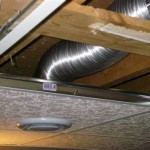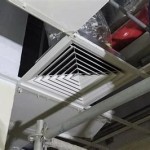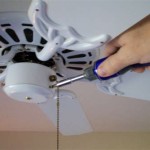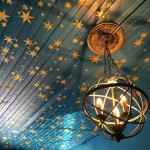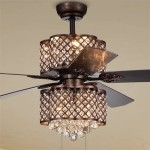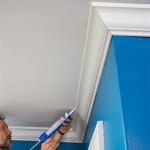Here's an article on the topic of false ceiling design, tailored for an audience interested in translating and understanding the nuances of the term "False Ceiling Design" into Hindi.
Understanding False Ceiling Design: A Comprehensive Overview
The term “false ceiling design” encompasses a broad range of architectural and interior design practices centered on creating a secondary ceiling below the main structural ceiling of a room. This secondary ceiling, often referred to as a dropped ceiling or suspended ceiling, serves various functional and aesthetic purposes. Understanding the components, materials, and design considerations involved in false ceiling design is crucial for anyone involved in construction, interior decoration, or architectural planning.
The primary function of a false ceiling is to conceal infrastructural elements such as wiring, ductwork, and plumbing pipes that run beneath the floor above. By creating a plenum space between the structural ceiling and the false ceiling, these elements are hidden from view, contributing to a cleaner and more organized appearance of the room. Furthermore, false ceilings can improve the acoustic properties of a space by absorbing sound waves and reducing echoes. They also contribute to thermal insulation, reducing heat loss in the winter and heat gain in the summer, ultimately leading to lower energy consumption for heating and cooling.
In Hindi, the concept of "false ceiling design" can be translated and understood in several ways, depending on the context and the specific nuance one wishes to convey. Some possible translations include: "झूठी छत डिजाइन" (jhuti chhat design), "नकली छत डिजाइन" (nakali chhat design), or "सस्पेंडेड छत डिजाइन" (suspended chhat design). The most appropriate translation will depend on the intended audience and the specific details of the design being discussed. Understanding the essence of false ceiling design—the creation of a secondary ceiling for functional and aesthetic improvements—is key to accurately conveying the concept in Hindi.
Key Benefits of Incorporating False Ceilings
False ceilings offer a multitude of benefits, making them a popular choice in both residential and commercial buildings. These advantages extend beyond mere aesthetics and encompass practical improvements to the space.
Firstly, false ceilings enhance the aesthetic appeal of a room. They provide a smooth, uniform surface that can conceal imperfections in the original ceiling, such as cracks, unevenness, or unsightly structural elements. The availability of various materials, textures, and designs allows for customization to match the overall interior design scheme. Lighting fixtures can be integrated seamlessly into the false ceiling, creating a sophisticated and well-lit ambiance. From simple, minimalist designs to elaborate, multi-tiered structures, false ceilings offer unparalleled design flexibility.
Secondly, false ceilings significantly improve acoustics. The plenum space above the false ceiling acts as a sound barrier, reducing noise transmission between floors. The materials used in the false ceiling, such as acoustic tiles or panels, absorb sound waves, minimizing reverberation and creating a quieter, more comfortable environment. This is particularly beneficial in spaces such as offices, classrooms, or home theaters, where noise control is essential for productivity and enjoyment.
Thirdly, false ceilings contribute to energy efficiency. They create an insulating layer that reduces heat transfer, keeping the room cooler in the summer and warmer in the winter. This reduces the need for excessive heating and cooling, leading to lower energy bills and a smaller carbon footprint. The plenum space can also be used to house insulation materials, further enhancing the thermal performance of the building. In addition, false ceilings can improve lighting efficiency by reflecting light more effectively, reducing the need for artificial lighting.
Common Materials Used in False Ceiling Design
The choice of materials for a false ceiling significantly impacts its appearance, performance, and cost. Several materials are commonly used, each with its own unique properties and advantages.
Gypsum board, also known as drywall or plasterboard, is one of the most popular materials for false ceilings. It is lightweight, relatively inexpensive, and easy to install. Gypsum board can be painted, textured, or covered with wallpaper to achieve a desired aesthetic. It also offers good fire resistance and can be treated to resist moisture. However, gypsum board is susceptible to damage from water leaks and can sag or crack under excessive weight. It's widely favored for its cost-effectiveness and versatility in design applications.
Mineral fiber tiles or panels are another common choice for false ceilings, particularly in commercial spaces. They are known for their excellent acoustic properties and fire resistance. Mineral fiber tiles are typically available in a variety of sizes, textures, and colors, allowing for design flexibility. They are also relatively easy to install and maintain. However, mineral fiber tiles may not be as aesthetically pleasing as other materials and can be prone to staining from water leaks.
PVC (polyvinyl chloride) panels and tiles are a durable and water-resistant option for false ceilings. They are ideal for areas with high humidity or moisture, such as bathrooms and kitchens. PVC panels are easy to clean and maintain and are available in a variety of colors and designs. They are also relatively lightweight and easy to install. However, PVC is not as fire-resistant as other materials and may release harmful fumes when burned. Its durability and water resistance make it a suitable option for specific environments.
Wood, including wooden panels and planks, can be used to create a warm and natural look for false ceilings. Wood offers excellent aesthetic appeal and can be stained or painted to match the overall interior design. However, wood is more expensive than other materials and requires regular maintenance to prevent warping, cracking, or insect infestation. It is also not as fire-resistant as other materials and may require fire-retardant treatment. The aesthetic warmth and natural texture of wood make it a premium choice for discerning designs.
Metal, such as aluminum or steel, is a durable and versatile option for false ceilings. Metal panels and tiles are available in a variety of finishes, including powder-coated, brushed, or polished. They are resistant to moisture, fire, and pests. Metal ceilings can also be designed to incorporate lighting and ventilation systems. However, metal is more expensive than other materials and can be noisy if not properly insulated. Its durability and design flexibility make it a suitable choice for modern and industrial-inspired spaces.
Design Considerations for False Ceilings
Designing a false ceiling requires careful consideration of several factors, including the size and shape of the room, the desired aesthetic, the functional requirements, and the budget. A well-designed false ceiling can transform the look and feel of a space, while a poorly designed one can detract from the overall design.
The height of the room is a crucial consideration. Lowering the ceiling too much can make a room feel cramped and claustrophobic. Therefore, it is important to maintain a sufficient ceiling height to ensure a comfortable and airy feel. In smaller rooms, a simpler, less elaborate design may be more appropriate, while larger rooms can accommodate more complex and intricate designs. The scale of the room should guide the complexity and extent of the false ceiling design.
The lighting design should be integrated with the false ceiling design. Recessed lighting fixtures, such as spotlights or downlights, can be incorporated into the false ceiling to provide ambient lighting. Cove lighting, which is indirect lighting hidden behind a lip or ledge, can create a soft and diffused light. Pendant lights or chandeliers can be suspended from the false ceiling to add a decorative touch. The lighting scheme should complement the overall design and create the desired ambiance.
The functional requirements of the space should also be considered. If the false ceiling is intended to conceal ductwork or wiring, sufficient space must be provided in the plenum. If the false ceiling is intended to improve acoustics, the appropriate sound-absorbing materials should be used. If the false ceiling is intended to provide thermal insulation, insulation materials should be installed in the plenum. The intended functionality should inform the material selection and the overall design approach.
The overall interior design scheme should be considered when designing a false ceiling. The false ceiling should complement the colors, textures, and style of the room. For example, a minimalist design might be appropriate for a modern space, while a more ornate design might be appropriate for a traditional space. The false ceiling should integrate seamlessly with the other design elements to create a cohesive and harmonious look. The chosen design should align with the overarching aesthetic goals of the space.
Finally, the budget must be taken into account. The cost of a false ceiling can vary widely depending on the materials used, the complexity of the design, and the labor costs. It is important to set a realistic budget and choose materials and designs that fit within that budget. Obtaining multiple quotes from different contractors can help to ensure that the project is completed at a reasonable price. Considering long-term costs, such as maintenance and energy savings, will inform the initial budgeting process.

False Ceiling क य ह करत All About Series

ज प सम फ ल स ग इ ट शन और ड इन क ए

आमत र पर घर क ल ए उपय ग ज न व 8 प रक फ स अल ट म

ज प सम फ ल स ग इ ट शन और ड इन क ए

फ ल स ग ड ज इन क प रक र Types Of False Ceiling Design

फ ल स ग क ए व भ न मग र य मत यद और कस

ज प सम फ ल स ग इ ट शन और ड इन क ए

फ ल स ग ड ज इन क प रक र Types Of False Ceiling Design

फ ल स ग ड ज इन क प रक र Types Of False Ceiling Design

ज प सम फ ल स ग इ ट शन और ड इन क ए
Related Posts

